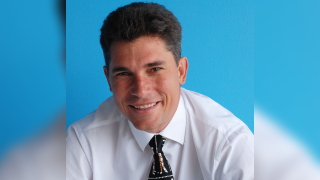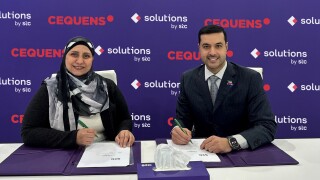
5G is being deployed and taken up in many parts of the world, but there is much room to maximise the user experience. Zhang Jiong, marketing director for radio-access-network products at ZTE, explains how its Radio Composer can optimise network resources to improve things for both operators and users.
As 5G gains traction in a host of different countries around the world, the demand for a high-quality, reliable user experience is more essential than ever. At the same time, demands on networks have soared to support a growing array of services and technologies, from IoT, AR and VR to 4K video and holographic calling.
But in addition, with all these new state-of-the-art services, the diversity of user needs on the network at any one time is continually expanding. For example, someone may be using simple WhatsApp text messaging with very low bandwidth requirements at the same time as someone else is indulging in the much-more-demanding activity of watching Netflix in 4K.
Yet Zhang Jiong, marketing director for radio-access-network products at ZTE, explains that a traditional “Stone Age” technology – as he puts it – will treat all users the same, regardless of what they’re doing. This means that the capabilities of networks, along with operators’ investment in them, are not being fully optimised. “That’s why we think sometimes that the potential of 5G is not really realised,” says Zhang.
He adds that sometimes 5G users can be unhappy about aspects of the service they get from their plans, such as speeds, even after coverage has improved in many places. This is particularly a problem if people are paying a lot to access the latest state-of-the-art technology.
“Normally, 5G plans are more expensive than 4G plans and we pay for that, but sometimes we just don’t get what we’re expecting,” says Zhang.
A new composition
But ZTE has a solution. This is the Radio Composer, which it launched in early 2021 and has already put into practice with some operators, such as China Telecom and China Unicom. The service harnesses an AI-based engine to change the paradigm from “network-centric” to a more “user-centric” one, using intelligent orchestration to allocate spectrum efficiently depending on user needs at a particular time.
“The Radio Composer is about living up to 5G users’ expectations,” says Zhang. “For us, it’s like making music out of the resources we have with a piano. It’s the same piano, but different people playing it can get different quality from the same song.”
He explains that people’s usage and expectations can be recognised with the help of AI and then users can be allocated optimal resources in accordance with their smartphone capabilities. The service can also prepare for required changes in advance by analysing historical traffic and making proactive predictions about where spectrum will be most needed at a particular time, based on deep machine-learning technologies. Network resources can then be dynamically allocated to different users, with levels being increased or decreased depending on their requirements.
“We’re integrating the latest advances in artificial intelligence and also other technologies at neighbouring base stations,” says Zhang. “They can then work between themselves as a group of base stations for optimised spectrum utilisation such as by using dynamic spectrum sharing.”
In real networks, he says, use of the Radio Composer has been seen to have the potential to increase user throughput by as much as 300% and total traffic in a particular area by 30%.
Intent-driven future
ZTE is now focusing on the next stage of development for the service, which will focus on so-called “intent-driven” networking, whereby operators want to offer users particular services with a specific intent and that provides an even deeper level of intelligence.
Zhang gives the example of a crowd at a football match in a stadium, where users may pose high demands on the network by accessing social media and sending pictures to their friends and videos via TikTok. At such an event, network resources can be increased for those in the stadium to give them higher priority compared with other users.
This type of functionality really paves the way towards the future, says Zhang. “Intent-driven technology is seen as a key part of 6G technologies,” he says.
Of the overall concept of the Radio Composer, he says, it can help to maximise operators’ return on investment and faster monetise their 5G services. As a result, there is lots of interest around the world, and ZTE is planning to expand the technology in Europe and then other regions, adding to its existing deployments.
“Everybody is interested, which is why we’re going to be doing trials and commercial deployments for operators in more countries,” says Zhang.
Ultimately, the expectation is that the technology will also hugely improve the experience for the end user in the long term by more closely catering to their specific needs. “It’s dynamic and it’s user-specific,” says Zhang. “Everybody has a different tailored experience and resource offering.”








